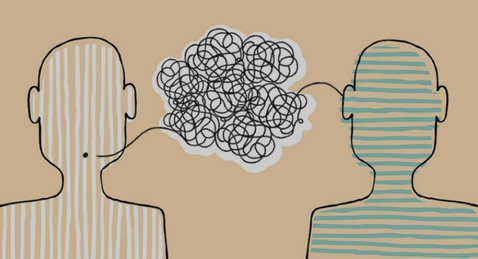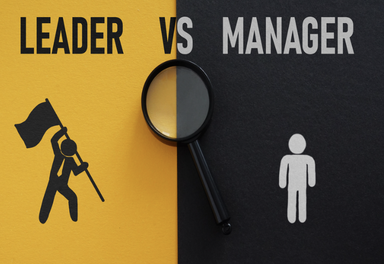|
Because no one remembers your resume—but they’ll remember how you made them think.
Here’s the brutal truth: most interviewers won’t remember everything you said. They won’t recall your full job history, the five acronyms you dropped, or that perfectly rehearsed line you practiced in the mirror. But if you do it right? They will remember three core things about you. Why three? Because that’s about as much as the human brain can hold after an hour of back-to-back interviews. Two feels thin--four is too much. But three? Just right. Clear. Memorable. Repeatable. Enter: Your 3 Core Connectors These are your signature themes. Your Strengths. Your DNA. The qualities that show up in every role you’ve held, every challenge you’ve tackled, and every win you’ve earned. Think of them as your throughlines—the backbone of your career story. They’re not about buzzwords. They’re about impact. Your job is to identify those three core strengths and thread them through the entire interview—from your intro to your close, and every story in between. Because when your interviewer walks out and someone asks, “So… what did you think of that candidate?” You want the answer to be: “She gets results, builds strong teams, and thinks like an owner. We need her.” Not: “She was nice.” (Spoiler: nice doesn’t get offers. Clarity does.) How to Choose Your Core 3Start with the role itself. What does the organization actually need in this position? Then ask yourself:
Here’s an example for a VP of Retail: 1. Proven Leadership That Drives Performance at Scale 15+ years leading regional and national retail operations. Known for transforming underperforming markets by aligning people, product, and process—while owning full P&L responsibility and delivering sustained growth. 2. Entrepreneurial Operator with a Builder’s Mindset Whether scaling store networks or restructuring teams, I thrive in complexity. I bring a founder’s focus, balancing speed with strategy—and I don’t wait for permission to solve what’s broken. 3. Leader-Maker Who Elevates Talent I develop leaders, not just manage teams. My coaching-first approach unlocks accountability, raises performance, and creates future-ready managers at every level of the business. Make It StickOnce you’ve got your 3 Core Connectors, anchor every example you give back to one of them. You don’t need to repeat the exact same phrasing—but keep the themes consistent. You’re building a case. A memorable, human, results-driven case. Buzzwords fade. Impact doesn’t. So next time you walk into an interview, don’t try to impress them with a list. Walk in with your 3 Core Connectors—and let them do the heavy lifting. Clear. Focused. Unforgettable. That’s what gets you hired. -Amy Magyar, Mentor Coach & Interview Whisperer You’ve made it through the bulk of the interview. You’ve shared your experience, dodged a few curveballs, and maybe even nailed that “tell me about a time” story you didn’t see coming.
Then comes the moment that still manages to catch people off guard (EVERYTIME!!!!): “So… what questions do you have for us?” It sounds polite. Casual, even. It’s not. It’s a test—and a massive opportunity. The questions you ask at the end of an interview say just as much about you as all the answers you gave before. Maybe more. The questions show what you’re paying attention to. What you care about. How you think. And whether you're here to fill a job—or step into a role that actually matters to you. First thing don't remember: Don’t wait until the end. The best interviews aren’t monologues. They’re conversations. The strongest candidates don’t save their curiosity for the final five minutes. They sprinkle it in throughout. Hints: You hear something interesting? Ask about it. You’re not sure what someone meant? Clarify. They mention a challenge you’ve dealt with before? Offer insight, and then ask how they’re handling it. That’s not interrupting—it’s engaging. And it builds connection faster than any canned “greatest strength” story ever could. But when you do get to that moment…Use it wisely. This is not the time to draw a blank or recycle questions from a list you Googled that morning. What to avoid:
Instead, try something like:
And if you have courage (and you know you do)...consider the following:
You don’t need to rapid-fire through a list. Two or three great, thoughtful questions will do more than ten generic ones ever could. You’re not just there to prove you can do the job. You’re there to decide if this is a place where you want to do the job. The right questions help you get clear on both. So ask them. Early, often, and with confidence. Because "any questions for us?" is not the end of the interview. It’s where your part of the conversation really begins. -Amy Magyar, Interview Expert & Question Crafter Be More Interested Than Interesting
Because curiosity beats performative charm - EVERY time. Here’s the truth no one tells you - job interviews are not auditions for “Most Impressive Human.” And yet, so many candidates show up trying to deliver a TED Talk instead of having a conversation. Spoiler: no one wants a one-person show. They want someone they actually want to work with. Enter your new mantra: Be more interested than interesting. This doesn’t mean you downplay your brilliance. It means you show up curious—because connection happens when you stop performing and start paying attention. What makes “interested” beat “interesting” every time:
Bonus: the answers to these questions will help you tailor your responses in real time and show that you're listening...not just waiting for your turn to talk. You’ll still get to share your wins. But you’ll do it in a way that actually lands—because it’s connected to what matters to them. Being interested instead of interesting gives you the anchor you need to make this interview a dialogue, not a monologue. And that is the key to a strong interview performance. Trying to be impressive is exhausting. Being curious is strategic. This is your chance to show up interested - because that’s what actually makes you interesting. -Amy Magyar, Your Strategic Interview Coach Hopefully you are here because you inhaled Part 1 and Part 2 in this series on learning to Respond vs. React...HOWEVER, you may have found yourself deep in reaction recently...Part 3 is here to help you navigate the moment after the moment—with courage, clarity, and zero shame spirals.
Does this sound familiar? You had the best intentions. You’ve been practicing the pause. You know the difference between reacting and responding. And then… boom. You snapped. The text got a little too spicy. The email had edge. You rolled your eyes in high-definition. So now what? This is the part no one likes to talk about—but where real growth lives. Not in never reacting again (spoiler: you will), but in what you do after you lose your cool. Here are some ideas to help you after you may have gone from response to react mode: 1. Interrupt the Spiral—Don’t Let Regret Run the Show First: Pause. Breathe. Don’t let your inner critic start narrating your downfall. Reacting doesn’t mean you’ve failed—it means you’re human. Don’t pile on the shame. Shame keeps you stuck; curiosity sets you free. Instead of “Why did I do that? I always do this.”, try: “What was going on in me that made that reaction feel necessary?” “Was I overwhelmed? Unclear? Trying to protect something?” Treat yourself like someone worth understanding—not scolding. 2. Own It—With Just Enough Detail Now comes the repair. The key: be real, not dramatic. Own your part without over-explaining or undercutting your intention. Keep it clean and clear:
Bonus: This models accountability without self-erasure. It tells others they can be human too—and that safety doesn’t require perfection. 3. Re-Center Before You Re-Engage Don’t jump straight from reaction to repair without checking in with yourself first. Even after apologizing, your nervous system might still be buzzing. Re-centering helps you return from defense to grounded presence. Otherwise, you’re just reacting...politely. Try:
You don’t have to be perfect to continue—you just have to be present. 4. Let It Teach You (Without Turning It Into a Personality Flaw) Every reaction holds a clue: to your values, your boundaries, your wounds, or your unmet needs. Instead of turning your reaction into a self-critique, turn it into self-inquiry. Ask:
5. Repair > Regret We all react. The question is: will you repair? Owning your impact, reconnecting to your intention, and choosing again—that’s where trust is built. That’s where maturity lives. That’s the practice. You don’t have to be flawless. You just have to keep showing up aware. You reacted. So what. Now respond. Respond with clarity. With compassion. With curiosity. You’re not back at square one—you’re deep in the work. Reacting isn’t the end of the story. The power is in the next moment—the one where you choose to repair instead of retreat, reconnect instead of recoil. You are not your reaction. You are the one who noticed. The one who chose again. That? That’s resilience. That’s self-leadership. That’s growth. -Recovering Reactionist, Amy Magyar, ICF Mentor Coach You’ve probably felt it before—that sudden rush of heat, the sharp retort forming, the inner monologue that sounds more courtroom than conversation. That’s a reaction.
If you read Part 1 of this series, you already know: Reacting is a reflex. Responding is a choice. But here’s the secret Part 1 didn’t fully unpack: You can’t make that choice unless you notice what’s happening in the first place. That flicker of awareness--“Wait, I’m about to lose it…”—is your access point to power. It’s the half-second where you can either hit “send” or back slowly away from the keyboard. And that moment? It’s not luck. It’s a skill. Let’s talk about how to catch reacting before it catches you. First, Know Your Tells You can’t intercept the punchline if you don’t see the setup. Reactions don’t just appear out of nowhere—they have a warm-up act. A tightening jaw. The urge to “educate” someone mid-meeting. That familiar internal monologue that starts with “Oh hell no…” These are your signals. Your nervous system is basically throwing you a pre-show announcement: “Buckle up—drama incoming.” Start by learning what your personal reaction runway looks like. Some usual suspects:
Ask yourself:
Second, Create Micro-Moments of PauseThe goal isn’t eternal Zen. It’s 10 seconds of sanity. Once you notice the spark, you don’t need a meditation retreat. You need a beat. A sliver of space. A moment to say, “Wait—do I want to go full drama here, or maybe just...not?” Think of it like hitting the “save draft” button on your nervous system. Ways to create a micro-pause:
o “Pause. Then choose.” o “I can respond, not react.” o “What is the truth?” The moment you notice and don’t override it? Boom. Pattern interrupted. Third, Normalize the Catch (Even Mid-Meltdown)Mid-sentence is not too late. Contrary to popular belief, you don’t need to be a monk to course-correct. You can pause mid-sigh, mid-snap, or even mid-sarcastic monologue and still salvage the moment. Most of us think: “Well, I already reacted, guess this is who I am now.” Not true. You can pivot anywhere in the sequence. Even better? You can call it out with honesty and a little grace. Try saying:
This not only changes the emotional tone of the interaction—it builds trust. It shows the other person (and yourself) that you’re willing to choose presence over performance, and connection over control. Reacting doesn’t make you bad. It makes you human. Catching it? That’s the flex. That’s what turns autopilot into intentionality. Every time you notice—mid-eye-roll, mid-overexplaining, mid-email-draft—you reclaim your agency. And over time, the noticing gets faster, the pausing gets easier, and the responses get clearer. Noticing is the work. Choosing again is the practice. And that practice? That’s how you lead, with clarity, not chaos. Coming next: Part 3—what to do when you’ve already reacted and want to repair, re-center, or not spiral into self-blame. -Amy Magyar, PCC, ICF Mentor Coach (and Recovering Reactor!) If there’s one foundational shift I encourage my clients to make that literally changes their lives (and my own), it’s this:
Learn to respond instead of react. This single choice can redefine your leadership, your relationships, your inner peace—and your energy. I have learned to choose presence over impulse. And I save energy and a TON of wasted time pretending I can read minds. Because what I am reacting to, often, is not what is really happening. Responding is intentional. It’s the moment you mentally tap the brakes and ask, “What is the truth in this situation?” It invites clarity. It gives your higher self a seat at the table. It’s where real growth and grounded action happen. Reacting, in contrast, is when the body hijacks the moment. Emotions surge. The nervous system overrides reason. You speak or act without pausing—and often regret it later. It’s draining, not just emotionally, but energetically. I’ve had to learn (and re-learn) this lesson personally. There was a moment in my life—one I won’t forget that was the turning point from me—someone VERY close to me said something that cut deep. It wasn’t just the words; it was what they triggered. Old wounds. Stories I thought I had healed. My body reacted instantly: tight chest, heat behind the eyes, a wave of emotion rushing in. Everything in me wanted to lash out. Defend. Shut down. Prove something. But something inside me whispered, “Wait.” So I stepped away. Breathed. Sat with the discomfort. And I asked myself the question that’s become an anchor: “What is the truth here?” The truth was: I was hurt. Not because of what was said—but because of what it touched in me. The truth was: reacting would only create more disconnection. The truth was: I had a choice. That moment changed me. In high-pressure moments, it’s tempting to let reaction win. But choosing to respond instead? That’s where true power lives. It’s not about being passive—it’s about being present. This is the work: creating space between the trigger and the choice. That space is everything. “Between stimulus and response there is a space. In that space is our power to choose our response. In our response lies our growth and our freedom.” — Viktor E. Frankl Reacting is easy. Responding is self- leadership. If you're done being pulled by urgency and ready to lead with clarity and intention, let’s talk. We’d be honored to hold space for you in a complimentary exploratory session. Join me next week for 3 practical tips on how to start responding instead of reacting. Small shifts. Big results. -Amy Magyar, PCC, ICF Mentor Coach In a recent virtual event hosted by FromWithin Coaching, Leadership Coaches, Lu Setnicka and Augusta Good shared invaluable insights on navigating 'hard' communications within organizations. The event, attended by leaders of all levels of experience, from a global organization with diverse backgrounds, delved into the intricacies of addressing challenging topics with employees.
Key Takeaways: Cultivating Empathy: The coaches emphasized the importance of approaching hard conversations with empathy and courage. Understanding the perspectives and emotions of employees lays the foundation for constructive dialogue. Clear Communication Strategies: FromWithin Coaching advocates for clear and transparent communication. Setting expectations, providing context, and being explicit in conveying messages can mitigate misunderstandings. Psychological Safety: Lu Setnicka and Augusta Good highlighted the significance of ensuring that psychological safety is in place to ensure success during tough conversations. Creating a space where employees feel heard and safe contributes to building trust and fostering open communication. Constructive Feedback: The event explored techniques for delivering constructive feedback effectively. The coaches shared practical tips on framing feedback in a way that promotes growth rather than demoralization. Attendees of the large virtual event praised the practicality of the advice shared by Lu and Augusta. Many expressed newfound confidence in approaching difficult conversations, armed with the tools provided during the session. We are grateful for the organization opening up their event to us and we look forward to continuing the learning with them! As organizations evolve, effective communication remains a cornerstone of success, and FromWithin Coaching stands at the forefront, empowering leaders to communicate with empathy, clarity, and confidence. As the owner of FromWithin Coaching, I am in constant awe of the work that organizations are willing to do, and for my Coaches who help them navigate the change they seek! What are you ready for? -Amy Magyar, PCC As an Executive/Leadership/Career Coach at FromWithin Coaching, I enjoy collaborating with my clients on a variety of topics. A recent exchange caused me to think about how to best support a client moving from a tactical, managerial role to a strategic, leadership role; what's the difference and what will she face?
In doing some research, I came across a 2001 HBR article written by renowned Harvard Business School professor John Kotter, "What Leaders Really Do (see link below)." Here's what jumped out for me: "Management is about coping with complexity." "Leadership, by contrast, is about coping with change." So true. For any of you who have been in either role, you are no doubt nodding your head in agreement. If you're struggling with being a manager or a leader, or moving from one to the other, consider setting up an Exploratory Session with me (30 minutes - Free!) and we'll have a chance to dive deeper: https://lnkd.in/gyhfvGGA To learn more from Dr. Kotter, here's a link to the article I reference above: https://lnkd.in/gGdJhC8v Remember, we're all leaders , even if we don't have that specific word in our job description - always show up as your best self! -Lu Setnicka Our in-house resume writer, C. Jane Taylor was a Strengths doubter. Now that she embraces her Strengths, she’s happier and more fulfilled. You can be, too!
Join her and Coach Mary McClements for a two-hour Strengths workshop tailored to Women Over 50, September 27 starting at 12pm EST. https://fromwithincoaching.com/womenover50cliftonstrengthsevent.html.  As women, we often feel pressure to conform to certain expectations and roles. Society tells us how we should behave, what we should be interested in, and what we should strive for. But in reality, every woman is unique, with her own set of strengths, passions, and goals. That's where the CliftonStrengths assessment comes in. Developed by the Gallup organization, Clifton Strengths, also known as StrengthsFinder, is a tool designed to help individuals identify their unique strengths and talents. By understanding our strengths, we can better understand how we are naturally wired and how we can use our strengths to excel in our personal and professional lives. So why is this especially important for women? By understanding and leveraging our strengths, we can focus on what we are naturally good at and pursue opportunities that align with them. This can lead to increased job satisfaction and career success, as we are more likely to feel energized and engaged in work that utilizes our strengths. Identifying our strengths can also help us communicate more effectively with others and build stronger relationships. When we know what we are naturally good at, we can more easily delegate tasks and collaborate with others. This can be especially helpful in the workplace, where understanding our strengths can help us navigate office politics and build strong, productive teams. But the benefits of understanding our strengths go beyond the workplace. By focusing on our unique abilities and passions, we can lead more fulfilling and meaningful lives. We can pursue hobbies and activities that bring us joy and use our strengths to make a positive impact on the world. So if you're a woman looking to thrive in your personal and professional life, consider taking the CliftonStrengths assessment. Understanding and leveraging your unique abilities can lead to a more fulfilling and successful life. Embrace your strengths and let them guide you on your journey to greatness! And if you are a Woman over 50, consider joining us May 23rd for a chance to learn about your Strengths in a community setting: https://fromwithincoaching.com/may23.html And make sure you sign up for our emails to learn about upcoming Strengths Events coming to FromWithin Coaching by emailing us at [email protected]! - Coach Megan Flanagan |
AuthorThe authors of these blogs include incredible Coaches and Writers at FromWithin Coaching who are inspired to share their thoughts, ideas, comments, and possibilities with YOU, the reader. Archives
July 2025
Categories
All
|



 RSS Feed
RSS Feed